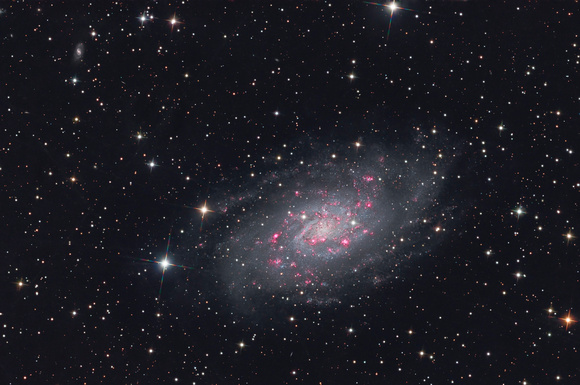NGC2403 Galaxy in Camelopardis (LHaRGB)
NGC2403 Galaxy in Camelopardis (LHaRGB)
Planewave CDK12.5; AP 1100GTO AE
ASI6200MM, - Antlia Pro Broadband and 3.5nm Ha filters
R,G,B: (52,57,54 x 180s, Bin 1, Gain 100)
Ha: (62 x 450s, Bin 1, Gain 200)
L: (76x150s, Bin 1, Gain 100)
Total integration time = 19.0 hrs (Mar 30, Apr 5,12,13 2024)
The NGC2403 Galaxy appears to be almost a twin of M33, the Triangulum Galaxy. Both galaxies have relatively poorly defined spiral arms and contain an large abundance of complex shaped, Ha emitting star forming regions – many of which are massive, looped and extend almost all the way into the galactic core. Both galaxies are similarly sized (about 1000 ly across – 70% of the Milky Way) and present to us at about the same angle to the galactic plane. NGC2403, at 9.7 million lys, is roughly 3 times farther away than M33 and to capture this image, I used a telescope with roughly 3 times the focal length to show them roughly the same size in the frame and resolution.
Supernova explosions seem to go along with high galactic star forming activity, and NGC2403 hosted one in 1954 and an 11th magnitude one in 2004 – the brightest in the 21st century.


